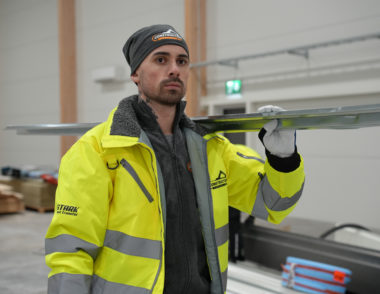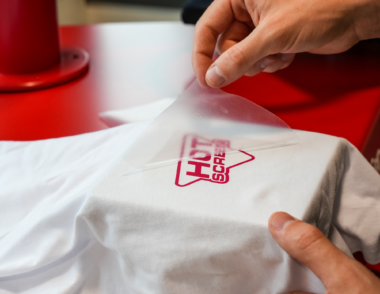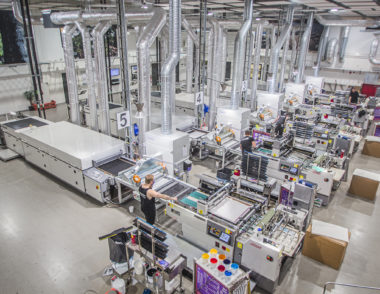About this article
Categories
Whilst it may be obvious for many who’ve worked in our industry for years, for others it’s less obvious how you should go about printing on clothing. That’s why in this article we take you through the process step-by-step to give you a structured way of working that will produce a great result every time.
How do I find out what settings I should configure on my heat press before applying my heat transfers to a garment?
Before you begin applying, check out some of our tips on what a structured printing workflow should look like.
General instructions for applying heat transfers
Make sure you enter the correct settings on your heat press before you start.
See the instructions above for the recommended settings for your product. Adjust the pressure on the machine based on the size of the sub-plate you’re using. We recommend a pressure of 2–3 bar for a small sub-plate and 5–6 bar for a large sub-plate on the heat press.
Make sure the garment is laid out straightly & smoothly and that no seams, zips or buttons are in the way. The entire surface touching the sub-plate has to be lying smooth to ensure the best result.
We recommend preheating the garment for at least 5 seconds before the heat transfer is applied. Preheating makes the garment shrink, giving you a nice flat area that the print can stick to properly.
Place your heat transfer on the garment and begin application. Our heat presses automatically end the application when the set time ends.
ATTENTION! On heat presses not manufactured by us, you may need to end the application manually.
Once the transfer is complete, remove the plastic carrier. When using STARK & FLEX Heat Transfer, the carrier can be removed while it’s still warm. When using REFLEX Heat Transfer, the carrier should only be removed once it’s cold.
Once you have finished applying your transfer, we always recommend running your hand over the transfer to ensure that the adhesive has melted correctly. You will easily be able to tell if the adhesive has not melted correctly. If this happens, place a piece of protective paper (art: 3016) on top with the matte side facing down and run the heating iron over it for 10 seconds. Then immediately remove the protective paper and your application is complete.
About this article
Written by:
Max Schelin
Categories
Related articles

Printing on Polyester? Here's How!
Read more

Printing machine for clothes - this is how they work!
Read more

The Digital Number – all numbers in one transfer
Read more

My placements
Read more
If you are using smaller sub-plates, you should reduce the pressure to 2-3 bar.
About this article
Written by:
Max Schelin
Categories
Related articles

Printing on Polyester? Here's How!
Read more

Printing machine for clothes - this is how they work!
Read more

The Digital Number – all numbers in one transfer
Read more

My placements
Read more

Prints on workwear? Choose the heat transfer Stark!
Products
Tips & Tricks

The plotter print is a variation of our product Stark Heat Transfer.
Products

Learn more about the various print methods in the textile industry.
Print methods
Mon-Thu: 08.00-16.30
Fri: 08.00-15.30
Följ oss!
When you archive an article, it disappears from your webshop and is no longer orderable.
When you activate an article, it disappears from your archive and you can order it again